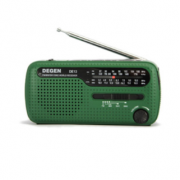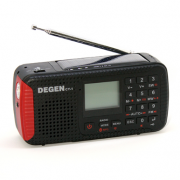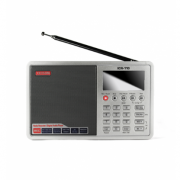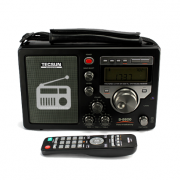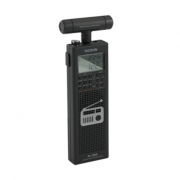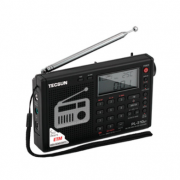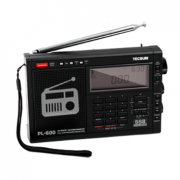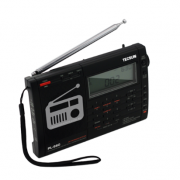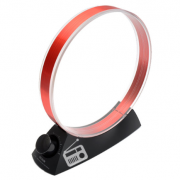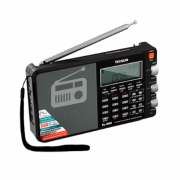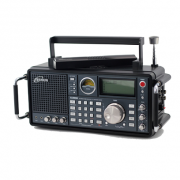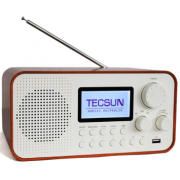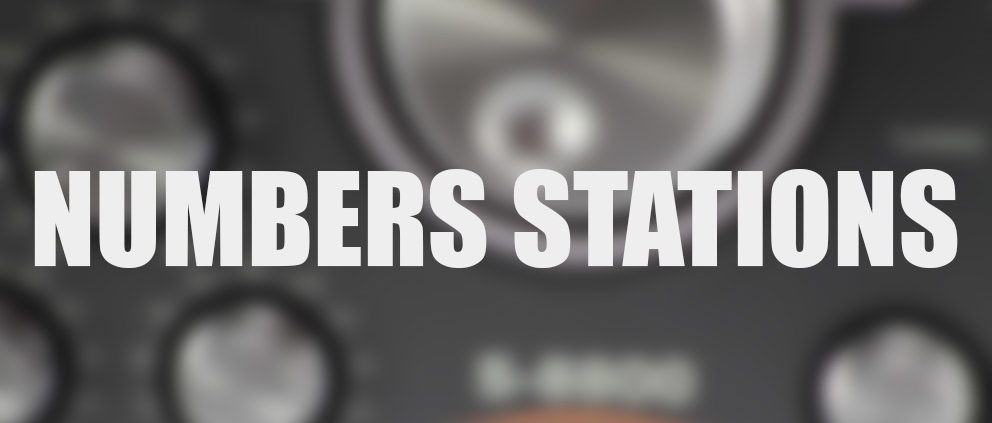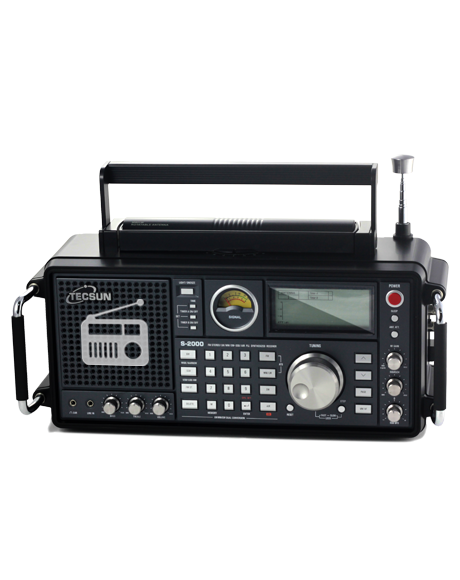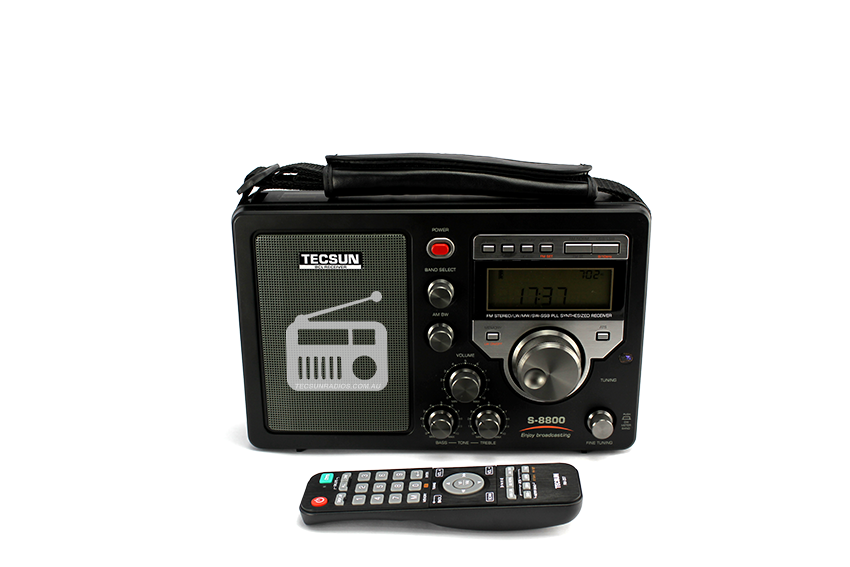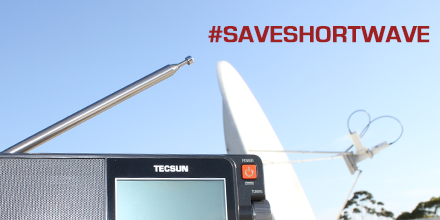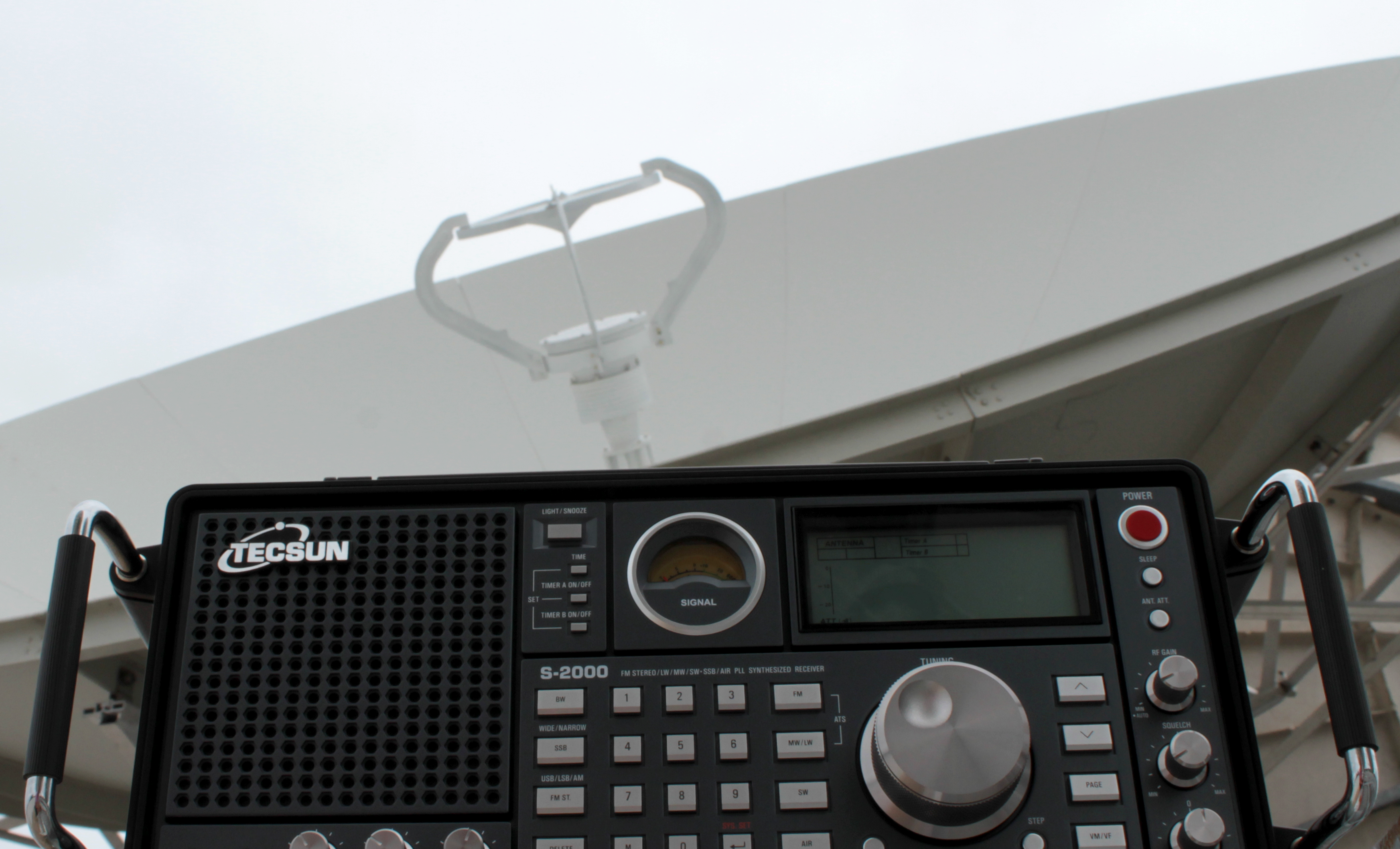In this age of digital radio and streaming via the internet, it can sometimes be difficult to locate your local ABC AM radio station.
Here is a list of major ABC AM radios stations by area. All frequencies are in kilohertz (kHz) and all are on the medium wave band (MW).
Sydney 702, Melbourne 774, Adelaide 891, Canberra 2CN 666 and 2RN 846, Perth 720, Alice springs 783, Hobart 936, North and Western SA 639, Western QLD 603, Gippsland 828, Northwestern WA 702, Southwesten WA 1044, Kimberleys 675, North Qld 630.
The Full list is available below. Enter the location in the Search bar to locate the stations for that area.
| Location | Callsign | Frequency | Broadcaster Type |
|---|---|---|---|
| Adelaide S.A. | 5RN | 729 | National |
| 5AN | 891 | National | |
| 5PB | 972 | National | |
| 5RPH | 1197 | Community | |
| 5DN | 1323 | Commercial | |
| 5AA | 1395 | ||
| Albany W.A. | 6AL | 630 | National |
| 6VA | 783 | Commercial | |
| Albury N.S.W. | 2AY | 1494 | Commercial |
| Albury/Wodonga VIC | 3RN | 990 | Commercial |
| Alice Springs N.T. | 8AL | 783 | National |
| 8HA | 900 | Commercial | |
| Armidale N.S.W. | 2RN | 720 | National |
| 2AD | 1134 | ||
| Atherton Q.L.D. | 4AM | 558 | Commercial |
| 4AT | 720 | National | |
| Ballarat VIC | 3BT | 1314 | Commercial |
| Bega N.S.W. | 2EC | 765 | Commercial |
| 2BA | 810 | National | |
| Biloela Q.L.D. | 4CC | 666 | Commercial |
| Bourke N.S.W. | 2WEB | 585 | Community |
| Bridgetown W.A. | 6BY | 900 | Commercial |
| 6BR | 1044 | National | |
| Brisbane QLD | 4QR | 612 | National |
| 4KQ | 693 | Commercial | |
| 4RN | 792 | National | |
| 4PB | 936 | National | |
| 4BC | 1116 | Commercial | |
| 4YB | 1197 | Community | |
| 4RPH | 1296 | Community | |
| Broken Hill N.S.W. | 2BH | 567 | Commercial |
| 2NB | 999 | National | |
| Broome W.A. | 6BE | 675 | National |
| Bunbury W.A. | 6EL | 621 | Commercial |
| 6TZ | 963 | Commercial | |
| Bundaberg QLD | 4BU | 1332 | Commercial |
| Burnie TAS | 7BU | 558 | Commercial |
| Busselton W.A. | 6BS | 684 | National |
| 6PB | 1152 | National | |
| 6RN | 1269 | National | |
| Byrock N.S.W. | 2BY | 657 | National |
| Cairns QLD | 4QY | 801 | National |
| 4EL | 846 | Commercial |
|
| Canberra A.C.T | 2CN | 666 | National |
| 2RN | 846 | National | |
| 1RPH | 1125 | Community | |
| 2CC | 1206 | Commercial | |
| 1EA | 1440 | National | |
| Carnarvon W.A. | 6LN | 666 | Commercial |
| 6CA | 846 | National |
|
| Charleville QLD | 4CH | 603 | National |
| 4VL | 918 | Commercial |
|
| Charters Towers QLD | 4GC | 828 | Commercial |
| Cloncurry QLD | 4LM | 693 | Commercial |
| Cobar N.S.W. | 2DU | 972 | Commercial |
| Coffs Harbour N.S.W. | 2HC | 639 | Commercial |
| Colac VIC | 3Cs | 1134 | Commercial |
| Collie W.A. | 6TZ | 1134 | Commercial |
| Cooma N.S.W. | 2XL | 918 | Commercial |
| 2CP | 1602 | National |
|
| Corowa N.S.W. | 2CO | 675 | National |
| Cumnock N.S.W. | 2CR | 549 | National |
| Cunamulla QLD | 4VL | 1584 | Commercial |
| Dalwallinu W.A. | 6DL | 531 | National |
| 6RN | 612 | National | |
| Darwin N.T. | 8RN | 657 | National |
| Deniliquin N.S.W. | 2QN | 1521 | Commercial |
| Derby W.A. | 6DB | 873 | National |
| Devonport TAS | 7AD | 900 | Commercial |
| Dubbo N.S.W. | 2DU | 1251 | Commercial |
| Dysart QLD | 4HI | 945 | Commercial |
| Eidsvold QLD | 4QC | 855 | National |
| Emerald QLD | 4HI | 1143 | Commercial |
| 4QD | 1548 | National | |
| Esperance W.A. | 6SE | 747 | Commercial |
| 6ED | 837 | national | |
| Exmouth W.A. | 6XM | 1188 | National |
| Fingal TAS | 7FG | 1161 | National |
| Fitzroy Crossing WA | 6FX | 936 | Community |
| Geraldton W.A. | 6GN | 828 | National |
| Gladstone QLD | 4CC | 927 | Commercial |
| Glen Innes N.S.W. | 2GL | 819 | National |
| Gordonvale QLD | 4EL | 954 | Commercial |
| Goulburn N.S.W. | 2RN | 1098 | National |
| 2GN | 1368 | Commercial | |
| Grafton N.S.W. | 2NR | 738 | National |
| 2GF | 1206 | Commercial | |
| Griffith N.S.W. | 2RG | 963 | Commercial |
| Gunnedah N.S.W | 2MO | 1080 | Commercial |
| Gympie QLD | 4GY | 558 | Commercial |
| 4GM | 1566 | National | |
| Hamilton VIC | 3HA | 981 | Commercial |
| Hobart TAS | 7RN | 585 | National |
| 7PB | 747 | National | |
| 7RPH | 864 | National | |
| 7ZR | 936 | National | |
| Horsham VIC | 3WV | 594 | National |
| 3WM | 1089 | Commercial | |
| Hughenden QLD | 4GC | 765 | Commercial |
| 4HU | 1485 | National | |
| Innisfail QLD | 4KZ | 531 | Commercial |
| Inverell N.S.W. | 2NZ | 1188 | Commercial |
| Jabiru N.T. | 8JB | 747 | National |
| Julia Creek QLD | 4JK | 567 | National |
| Kalgoorlie W.A. | 6GF | 648 | National |
| 6KG | 981 | Commercial | |
| Karratha W.A. | 6KP | 702 | National |
| Katanning W.A. | 6WB | 1071 | Commercial |
| Katherine N.T. | 8RN | 639 | National |
| 8HOT | 765 | Commercial | |
| Kempsey N.S.W. | 2PM | 531 | Commercial |
| 2KP | 684 | National | |
| Kingaroy QLD | 4SB | 1071 | Commercial |
| Kununurra W.A. | 6WR | 693 | Commercial |
| 6KW | 819 | National | |
| Leigh Creek S.A. | 5LC | 1602 | National |
| Lismore N.S.W. | 2LM | 900 | Commercial |
| Lithgow N.S.W. | 2LT | 900 | Commercial |
| 2LG | 1395 | National |
|
| Longreach QLD | 4QL | 540 | National |
| 4LG | 1098 | Commercial | |
| Mackay QLD | 4AA | 1026 | Commercial |
| Manjimup W.A. | 6MJ | 738 | National |
| Margaret River W.A. | 6TZ | 756 | Commercial |
| Maryborough QLD | 4FC | 1161 | Commercial |
| Maryborough VIC | 3EL | 1071 | Commercial |
| Melbourne VIC | 3RN | 621 | National |
| 3AW | 693 | Commercial | |
| 3LO | 774 | National | |
| 3CR | 855 | Community | |
| 3PB | 1026 | National | |
| 3AK | 1116 | Commercial | |
| 3RPH | 1179 | Community | |
| 3EA | 1224 | National | |
| 3EE | 1278 | Commercial | |
| 3MP | 1377 | Commercial | |
| 3KND | 1503 | Community |
|
| Merredin W.A. | 6MD | 1098 | Commercial |
| Mildura VIC | 3Ml | 1467 | Commercial |
| Moranbah QLD | 4HI | 1215 | Commercial |
| Morawa W.A. | 6BAY | 1512 | Retransmission |
| Moree N.S.W. | 2VM | 1530 | Commercial |
| Mossman QLD | 4MS | 639 | National |
| Mt Gambier S.A. | 5SE | 963 | Commercial |
| 5MG | 1476 | National |
|
| Mt Isa | 4LM | 666 | Commercial |
| Mudgee N.S.W. | 2MG | 1449 | Commercial |
| Murray Bridge S.A. | 5MU | 1125 | Commercial |
| Murwillumbah N.S.W. | 2ML | 720 | National |
| 2MW | 972 | Commercial |
|
| Muswellbrook N.S.W. | 2ML | 981 | Commercial |
| 2UL | 1044 | National | |
| Naracoorte S.A. | 5PA | 1161 | National |
| Narooma N.S.W. | 2EC | 1584 | Commercial |
| Narrogin W.A. | 6NA | 918 | Commercial |
| Newcastle N.S.W. | 2HD | 1143 | Commercial |
| 2NC | 1233 | National | |
| 2EA | 1413 | National | |
| 2PB | 1458 | National | |
| 2RN | 1512 | National | |
| Newman W.A. | 6MW | 567 | National |
| Nhulunbuy N.T. | 8GO | 990 | National |
| Northam W.A. | 6AM | 864 | Commercial |
| 6AM | 1215 | National | |
| Nowra N.S.W. | 2RN | 603 | National |
| 2ST | 999 | Commercial | |
| Oakey QLD | 4AK | 1242 | Commercial |
| Omeo VIC | 3MT | 720 | National |
| Orange N.S.W. | 2EL | 1089 | Commercial |
| Pannawonica W.A. | 6PN | 567 | National |
| Paraburdoo W.A. | 6PU | 567 | National |
| Parkes N.S.W. | 2PK | 1404 | Commercial |
| Perth W.A. | 6PB | 585 | National |
| 6WF | 720 | National | |
| 6PR | 822 | Commercial | |
| 6IX | 1080 | Commercial | |
| Pialba QLD | 4BQ | 855 | National |
| Pt Augusta S.A. | 5AU | 1242 | Commercial |
| Pt Douglas QLD | 4AM | 1422 | Commercial |
| Pt Hedland W.A. | 6PH | 603 | National |
| Pt Lincoln S.A. | 5CC | 765 | Commercial |
| 5LN | 1485 | National | |
| Pt Pirie S.A. | 5CK | 639 | National |
| 5AU | 1044 | Commercial | |
| Queenstown TAS | 7RN | 630 | National |
| Renmark S.A. | 5RM | 801 | Commercial |
| 5MV | 1062 | National | |
| 5RN | 1305 | National | |
| Rockhampton QLD | 4RK | 837 | National |
| 4RO | 990 | Commercial | |
| Roma QLD | 4ZR | 1476 | Commercial |
| Sale VIC | 3GI | 828 | National |
| 3GV | 1242 | Commercial | |
| Scottsdale TAS | 7SD | 540 | Commercial |
| Shepparton VIC | 3SR | 1260 | Commercial |
| St George QLD | 4QW | 711 | National |
| St Helens TAS | 7SH | 1584 | National |
| Streaky Bay S.A. | 5SY | 693 | National |
| Swan Hill VIC | 3SH | 1332 | Commercial |
| Sydney N.S.W. | 2RN | 576 | National |
| 2PB | 630 | National | |
| 2BL | 702 | National | |
| 2UE | 954 | Commercial | |
| 2KY | 1017 | Commercial | |
| 2CH | 1170 | Commercial | |
| 2RPH | 1224 | Community | |
| 2SB | 1269 | Commercial |
|
| Tamworth N.S.W. | 2NU | 648 | National |
| 2TM | 1287 | Commercial |
|
| Taree N.S.W. | 2TR | 756 | National |
| 2RE | 1557 | Commercial |
|
| Tennant Creek N.T. | 8RN | 684 | National |
| Tom Price W.A. | 6TP | 567 | National |
| Toowoomba QLD | 4QS | 747 | National |
| 4GR | 864 | Commercial | |
| Torres Strait QLD | 4TI | 1062 | National |
| 4MW | 1260 | Community | |
| Townsville QLD | 4QN | 630 | National |
| Tully QLD | 4KZ | 693 | Commercial |
| Wagga Wagga N.S.W. | 2WG | 1152 | Commercial |
| Wagin W.A. | 6WA | 558 | National |
| 6RN | 1296 | National |
|
| Wangaratta VIC | 3RN | 756 | National |
| 3NE | 1566 | Commercial | |
| Warragul VIC | 3GG | 531 | Commercial |
| Warrnambool VIC | 3RPH | 882 | Community |
| 3WL | 1602 | National |
|
| Warwick QLD | 4WK | 963 | Commercial |
| Weipa QLD | 4WP | 1044 | National |
| Wilcannia N.S.W. | 2RN | 1485 | National |
| 2WA | 1584 | National | |
| Wollongong N.S.W. | 2EA | 1035 | National |
| 2RN | 1431 | National | |
| 2EA | 1485 | National | |
| Woomera S.A. | 5WM | 1584 | National |
| Wyndham W.A. | 6WH | 1017 | National |
| 2LF | 1350 | Commercial |
The following radios are ideal for listening to ABC Radio.



